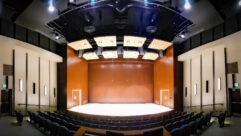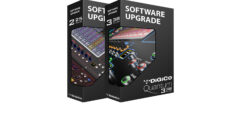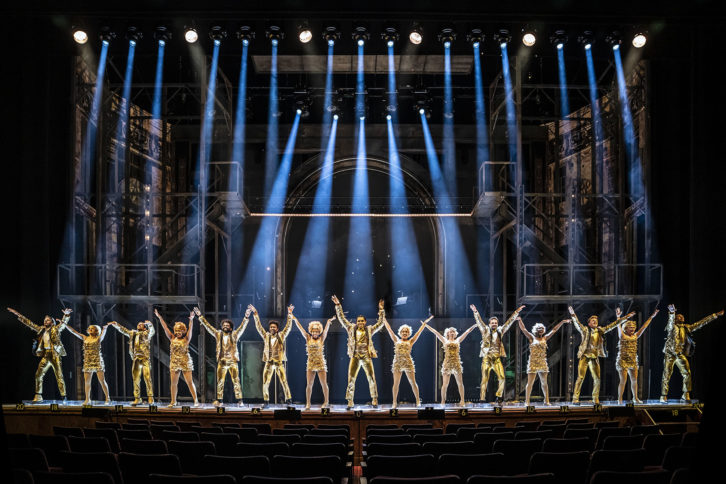
Photo above: A scene from the Ordway’s recent high-tech production of 42nd Street (photo credit: Paul Tate dePoo III, Scenic Designer)
St. Paul, Minnesota’s renowned Ordway Center for the Performing Arts has installed a new DiGiCo SD7T Quantum console in its main Ordway Music Theater, continuing its strategic reliance on DiGiCo SD-Range technology that began when the Center opened in 2009 with a D5 Live desk in the same venue. During a substantial facility upgrade in 2015, three SD9 consoles were installed in the Center’s newly constructed Concert Hall—an SD9 at front-of-house, an SD9B at the monitor position, and another SD9B in the studio—with a fourth SD9 added in 2017 as the worksurface for the Music Theater’s recording studio.
Equipped with DiGiCo’s theatre-specific software package, Ordway’s new SD7T Quantum is paired with two new 56×40 SD-Racks fully loaded with 32-bit Ultimate Stadius Mic Pre-Amps, and was installed in early July by Eden Prairie-based Audio Logic Systems, which has been the Center’s systems integration partner from the beginning. The installation was just in time for the opening of what is the most ambitious iteration yet of the Tony Award-winning musical 42nd Street, which ran at the Ordway’s Music Theater venue July 23 through August 11.
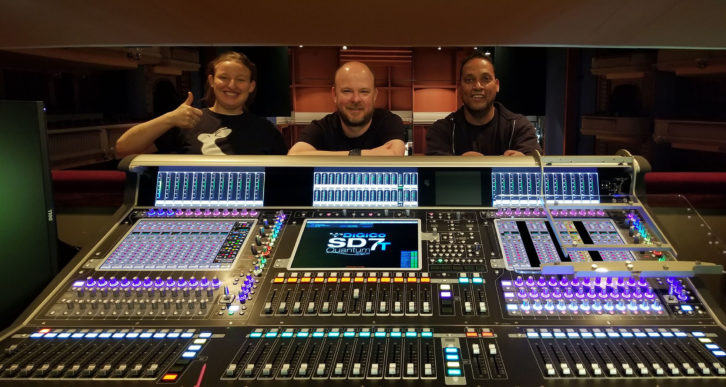
“I lobbied for the SD7T,” says Andrew Luft, Vice President of Building Operations and Production at the Ordway Center for the Performing Arts. “The D5 Live was a great console but it would not have been able to support this version of 42nd Street, which has 32 channels of RF vocal microphones and 28 channels of wireless tap-shoe mics. There was some serious tap choreography by Jared Grimes on this show, and the sound of the taps was deeply integrated into the arrangements with the nine-piece orchestra and two keyboards. We needed the SD7T.”
Luft says the SD7T Quantum’s ability to manage what were over 60 wireless microphones onstage, with “sends literally going everywhere throughout the theater” for the complex sound and production design by the successful Broadway team of David Patridge, John Shivers and Brian McDonald was essential to this production’s success, eliciting positive reviews that praise the production’s sound. “The SD7T’s ability to sum all of those channels really made managing this show so much easier,” he adds.
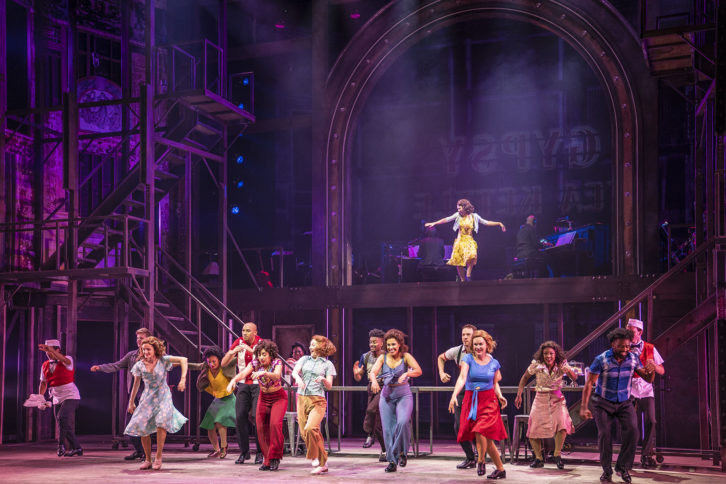
In addition to the newly installed SD7T Quantum console, this latest upgrade to the Ordway Center fully extended the Optocore fiber-optic network that had been installed earlier in the Concert Hall and Concert Hall recording studio. “We have now built out our fiber network to include the entire Center, along with a 128-channel Dante infrastructure to go with it,” says Luft. “We have similarly configured the worksurfaces in all of the performance locations in the Ordway Center, and they are all connected on the Optocore network. Before, we could send some stems from the Concert Hall to the Music Theater; now, we can have complete productions move back and forth between them and the studio, as needed, and even out to the loading dock for recording trucks or streamed to the internet.”
The implementation of the new SD7T means that Ordway Center now has a world-class workflow capability for theatrical performances, with features such as Cast Management Alias that controls channel settings, such as EQ, Aux sends or dynamics, on the desk from cue to cue and automatically updates throughout the show, and the Players tool, a function that accounts for character changes and changes of cast and allows operators to select which actor is playing a particular role. The entire production is then automatically updated with all the correct settings but without destroying the specific programming that’s been made from cue to cue.
“Broadway-level designers know how to use these tools, so having the theatre software package here is part of our long-term planning for keeping the Ordway at the cutting edge,” Luft explains. “Users can walk in and set the entire console up so it’s completely comfortable for their way of working. And with Quantum, the summing power is incredible—the console can do the math and it’s not going to ever run out of processing power. The SD7T Quantum was certainly the key to future-proofing this venue for years to come.”
For more information on Ordway Center for the Performing Arts, visit www.ordway.org. Audio Logic Systems can likewise be found online at www.audiologicsystems.com.



